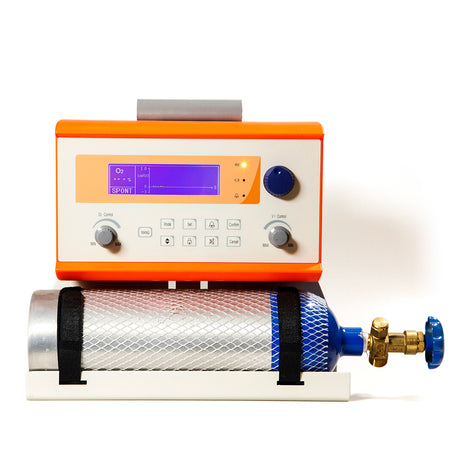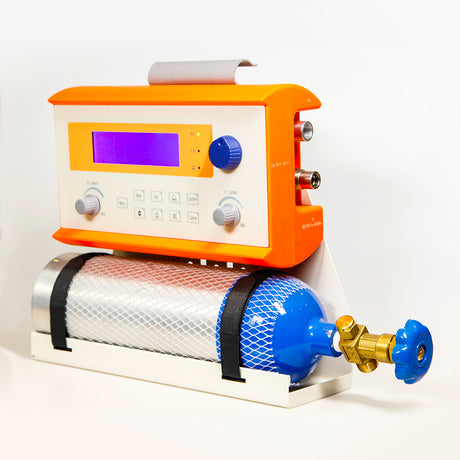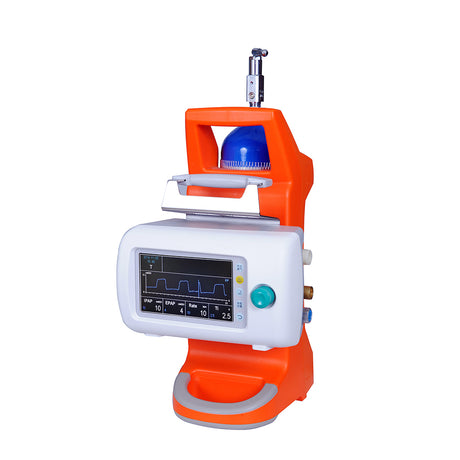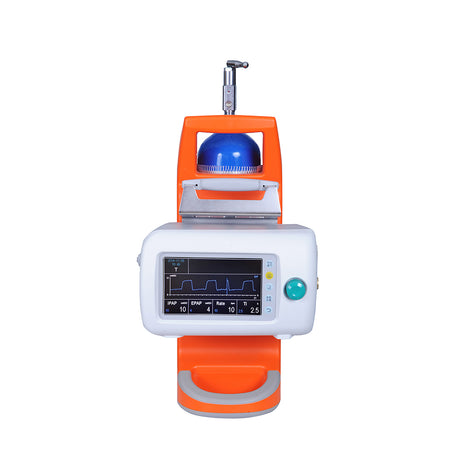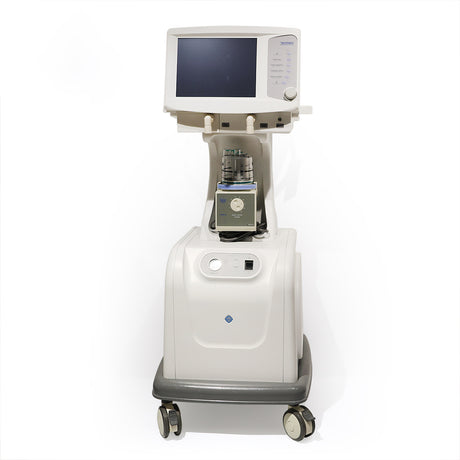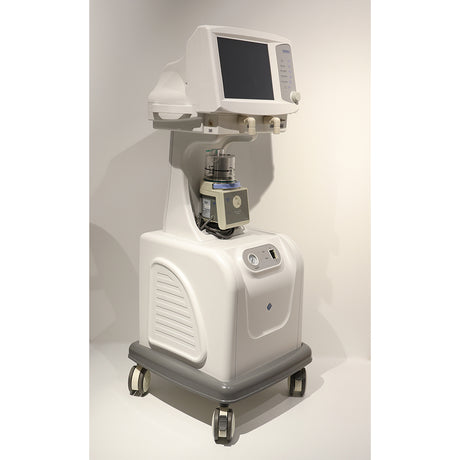Both types of ventilators function by delivering controlled air or oxygen-air mixtures into the patient’s lungs via a breathing circuit.
Key Working Principles:
1. Modes of Ventilation
•Invasive modes (e.g., Assist-Control, SIMV, PRVC) via endotracheal or tracheostomy tube
•Non-invasive modes (e.g., CPAP, BiPAP) via facial/nasal mask
2. Gas Delivery
•The ventilator blends oxygen and air, adjusting pressure, volume, and rate.
•Delivers gases using pressure or volume-controlled cycles based on the patient’s need.
3. Monitoring & Alarms
•Measures tidal volume, respiratory rate, pressure, SpO₂, EtCO₂.
•Includes alarms for apnea, circuit disconnection, high pressure, or low tidal volume.
4. Portability
•Transport ventilators are lightweight, battery-powered, and rugged.
•May include turbine or compressor systems for use without external gas supply.


